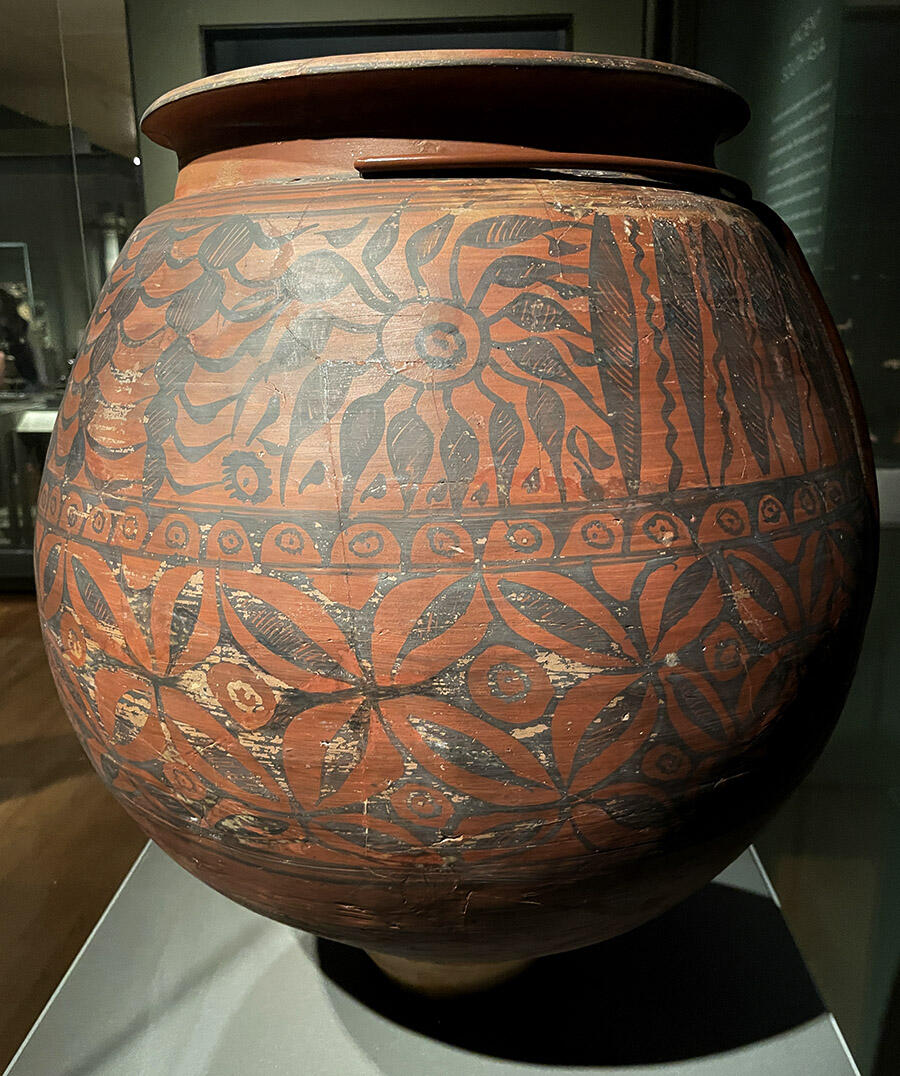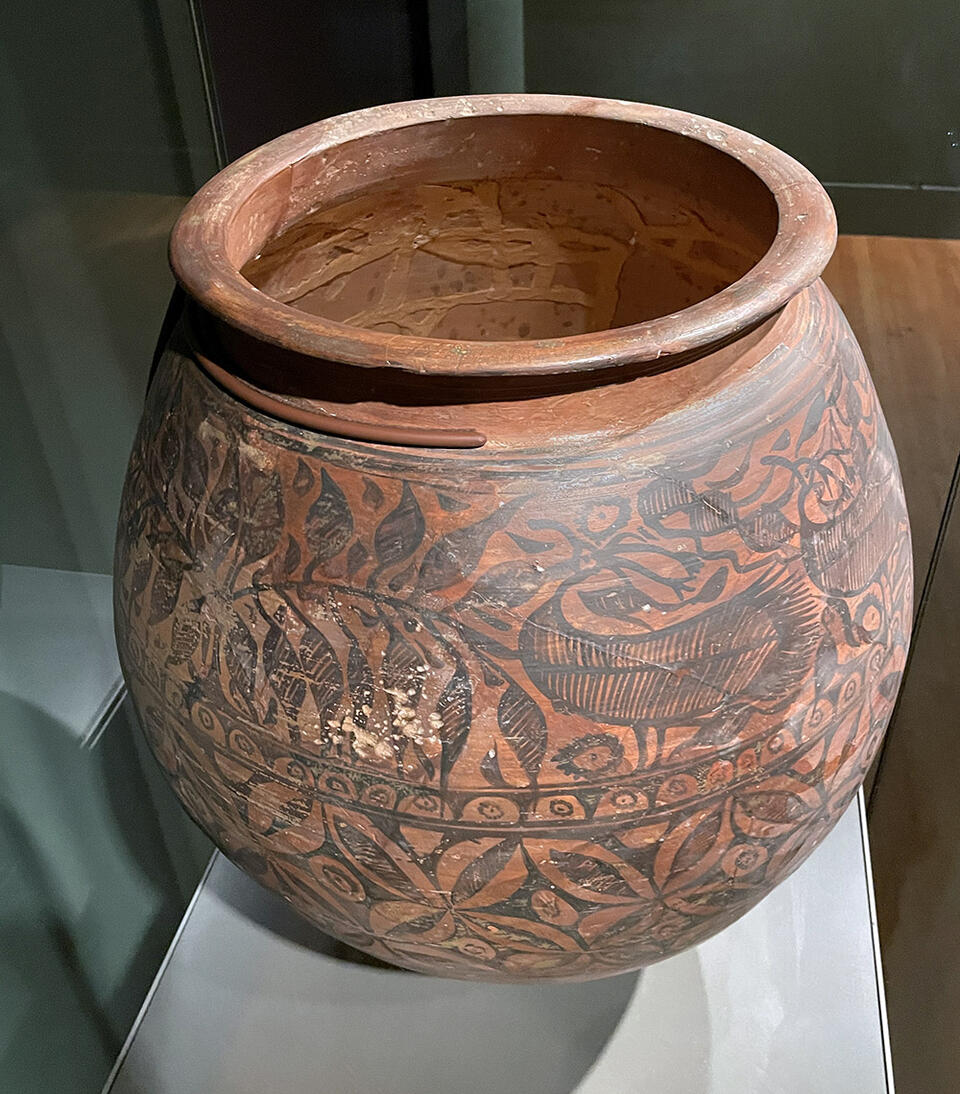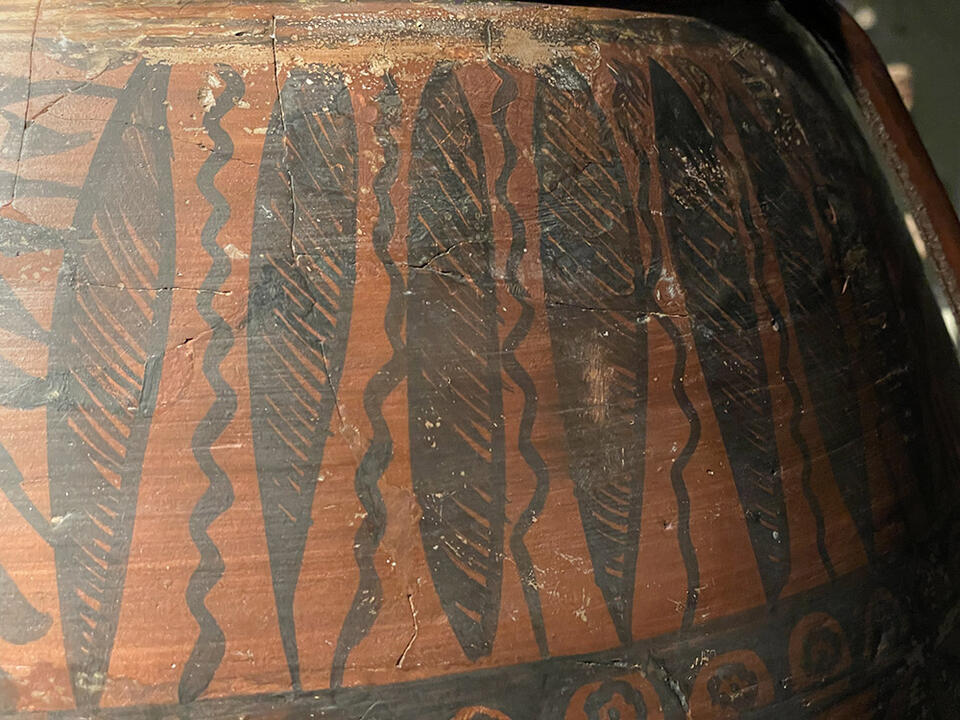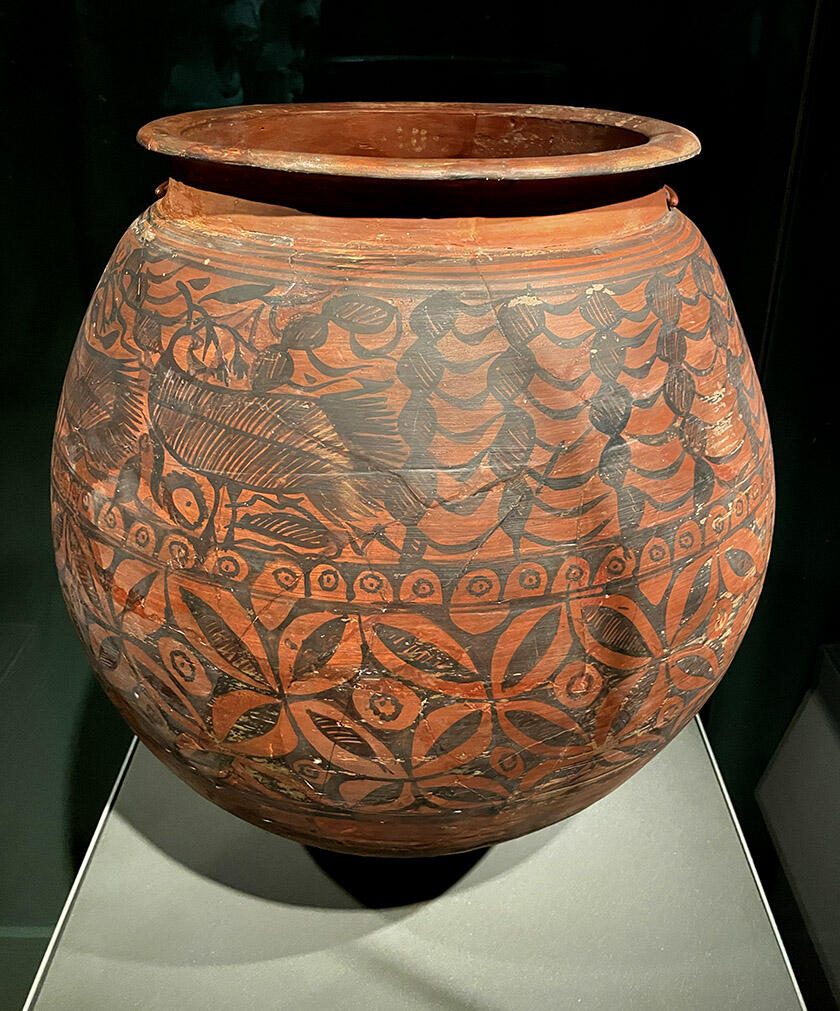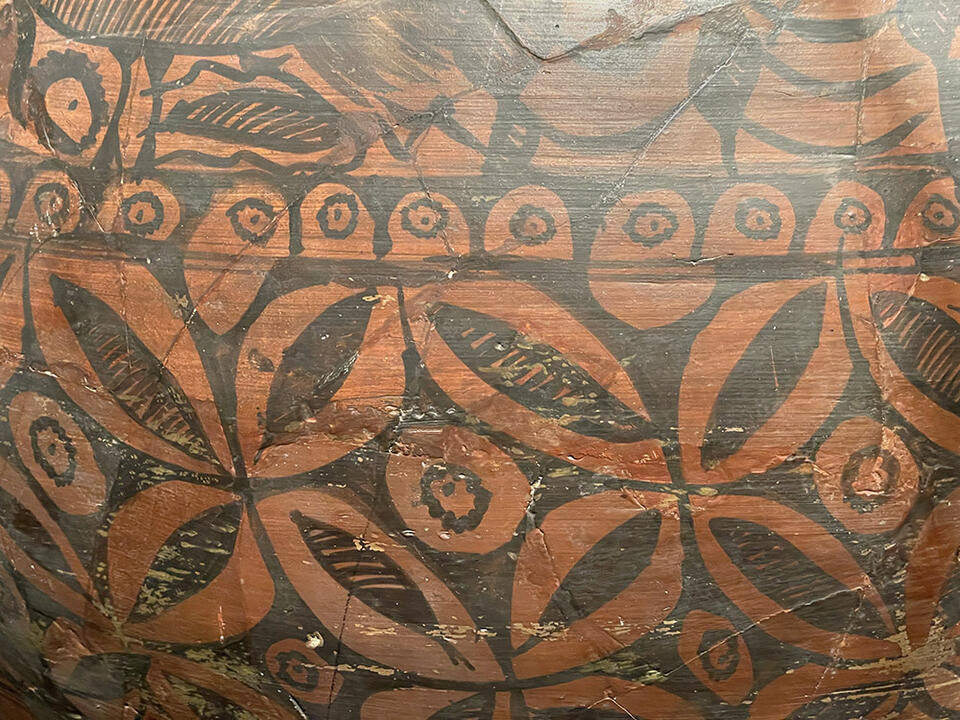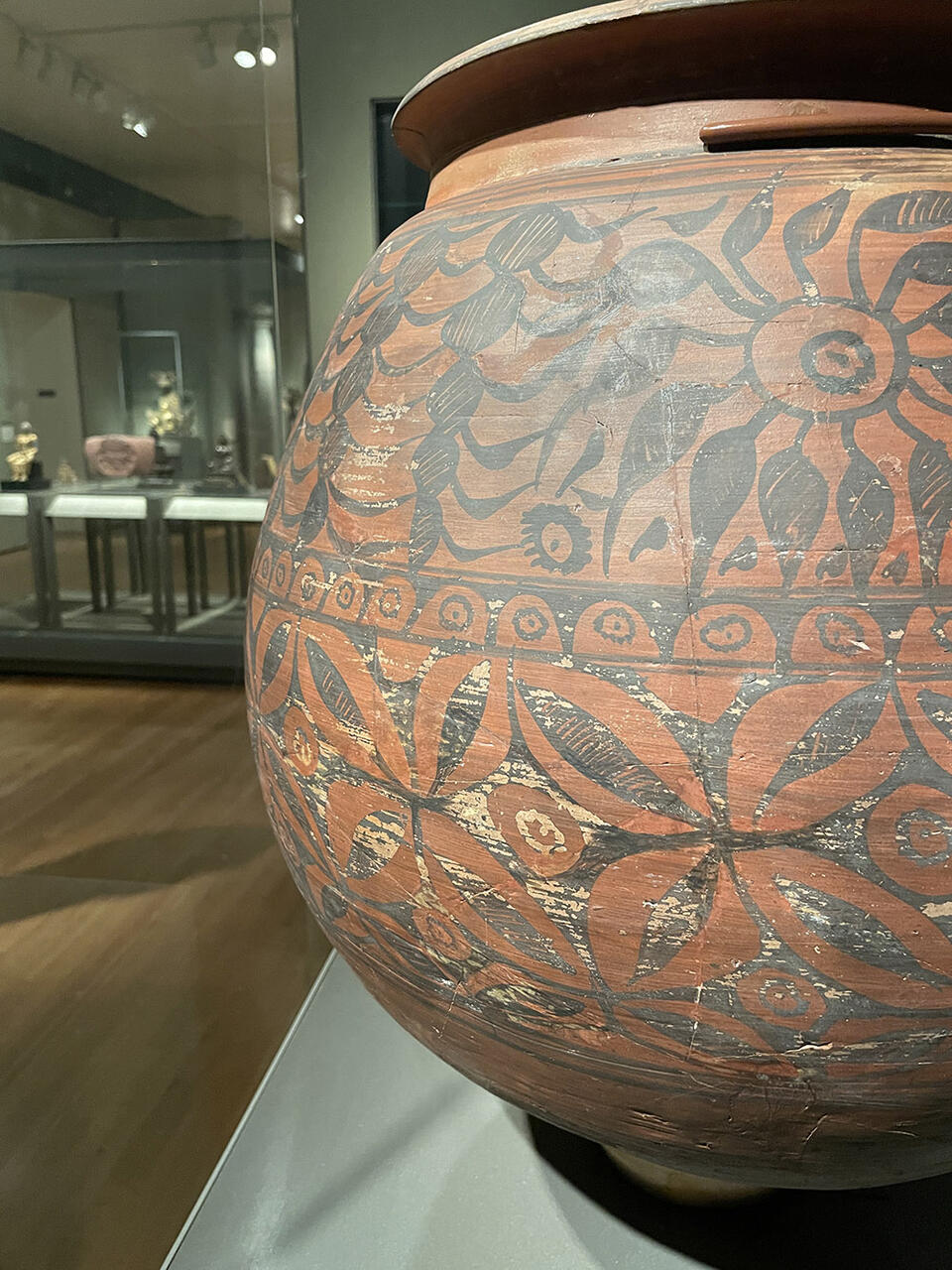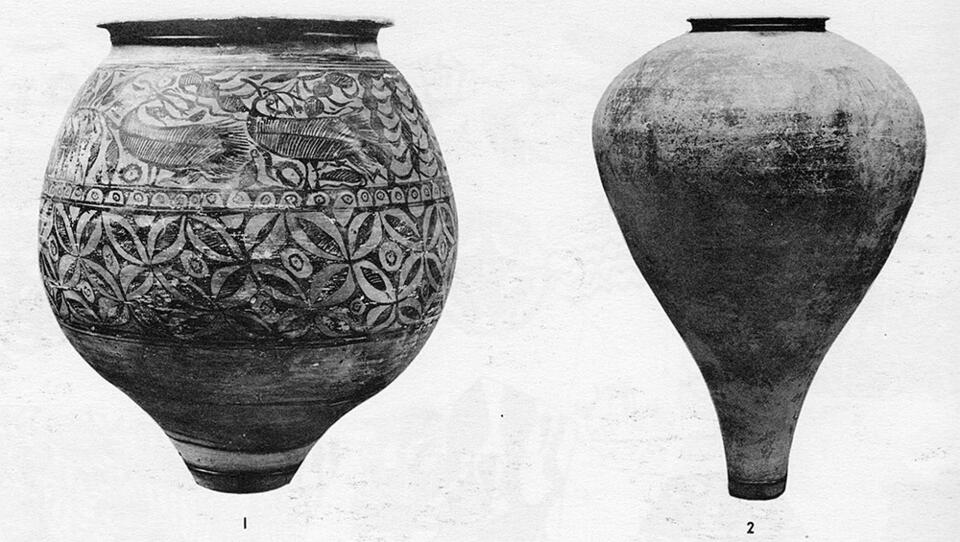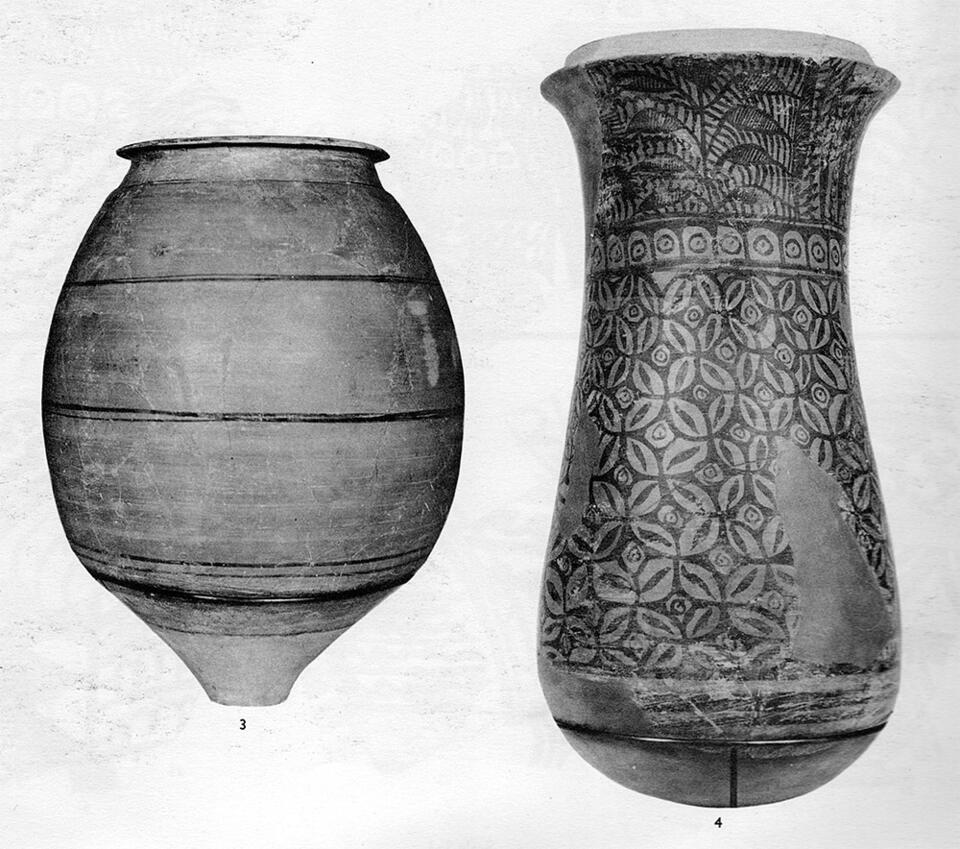April 3rd, 2023
"Jar painted with birds. 2600-1900 BC, Terracotta with red slip and black painted decoration," is what the unvarnished description at the Museum of Fine Arts (MoFA), Boston reads; in truth this is one of the largest and most richly painted ancient Indus pots ever found.
Together with a series of close-ups made at the Museum in December 2022, we present the text from Ernest Mackay's Chanhu-daro Excavations 1935-36 relating to what he called a "finely painted storage jar" (p. vi) which he surmised could have been painted by women as was the case in Sindh in the 1930s (p. 102). He included it with three others Plate XXXV, 1-4, with 1 referring to the jar at MoFA.
"All these jars are adequately baked, and the same materials were used in their manufacture as for the rest of the pottery. They are frequently decorated, sometimes with elaborate designs, sometimes only with thin lines of black, as in PI, XXXV, 3. The finely painted jars in Pl. XXXV, 1,4 are painted in black on rather rough red slips.” Other painted jars of this type from Chanhu-daro appear in Mr. Majumdar’s Report,” and many of the sherds shown in Pis. XXX, XXXI, XXXII, XXXIV, etc. are portions of jars of the storage type.
A plain red slip is used on Nos. 2, 6, and S in Pl. XXIV and a cream-coloured one on Nos. 4,5, and 7. Nos. 1,3, and 9 appear to have had no slip at all. As already mentioned, No. 2 in Pl. XXXV is coated with a brown wash, possibly in an attempt to render it water-tight," (p. 86).
-
"The peculiar exaggeration of the crests of the birds in Pl. XXXII, 3, XXXIII, 2, 12, XXXV, 1 shows an exuberant imagination. A plant-form actually takes the place of the crest in Pl. XXXIII, 2, while the two are combined in Pl. XXXIII, 2. This close association of a plant-form with this bird is of special interest, for peacocks are definitely connected, in some parts of India, with earth worship or with an earth goddess; they figure, for instance, in the great earth festival held by the Khonds of Southern India," (p. 92).
-
"A very common motif is the chain of leaf-like objects to be seen on the sherds in Pl. XXX, 7, XXXI, 16, 20, XXXII,1,1,a, XXXIII, 12, XXXVI, 16, 21,26, XXXVII, 20, 26, 29, some of which have filaments projecting from them on one side. Rows of these linked together appear conspicuously on the large storage jar in Pl. XXXV, 1 and on the sherd in Pl. XXXVII, 24. As the motif is associated with water-animals in Pl. XXXVl, 21, 26, it may be derived from some kind of water-weed. Sometimes each element in the chain has a dot in the centre, making it not unlike that of a bird s head (Pl. XXXII, 1, 1, a). Occasionally the elements are separate and scattered about the Reid as in Pl. XXXI, 1, 4 . This motif, whether connected or detached, is rarely seen on the pottery from Mohenjo-daro," (p. 93).
For other views, see this color drawing from Mackay's book and What Makes a Pot Harappan? by Heidi J. Miller.

